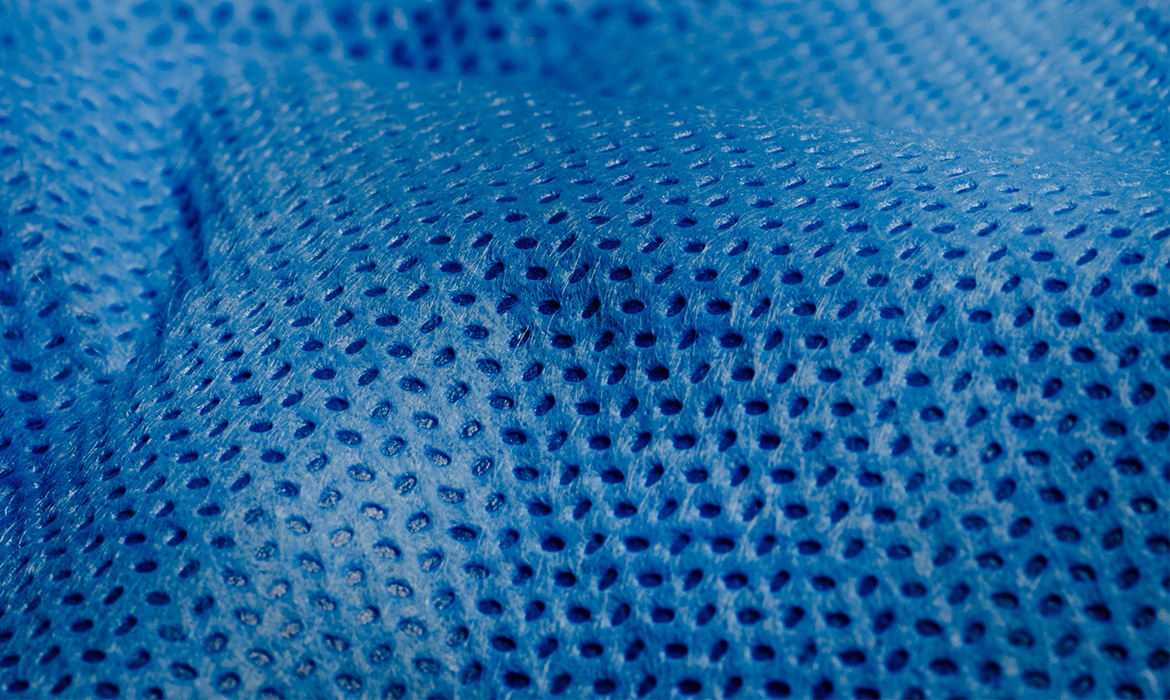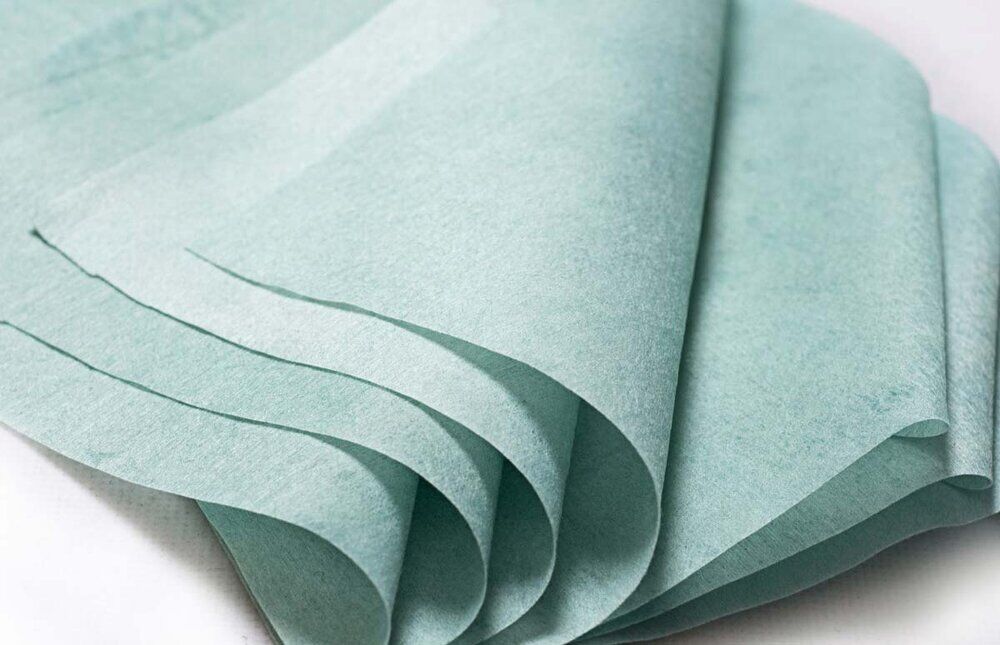
Everything About Nano Antibacterial Fabrics
The most recent

What is Geotextile?
9/20/2025Geotextile is a type of engineered fabric used in civil engineering projects. At HarirBaft Amir, we provide geotextiles at the best prices.

What is Agricultural...
9/12/2025Agricultural fabric is made from materials such as polypropylene or polyethylene and is manufactured using technologies like weaving or spunbond processes.

What is Nano Fabric?
8/20/2025Nano fabric, or nanofabric, is one of the key achievements of nanotechnology in the textile industry, revolutionizing our understanding of fabrics and their applications.
The most visited

Where to Buy Spunbon...
9/30/2023Spunbond fabrics belong to a category of non-woven textiles made from polypropylene. Unlike conventional fabrics constructed with warp and weft, spunbond materials

What is Spunbond
10/2/2023One of the most captivating, functional, and widely-used fabrics in the domestic market is the spunbond fabric. This fabric plays a significant role in the production of industrial products due to its unique characteristics.

Crafting Melt Blown ...
9/30/2023Melt blown textiles have emerged as one of the most sought-after materials, gaining prominence especially in the healthcare field
subscribe to newsletter

Everything About Nano Antibacterial Fabrics
8/3/2025
Nano antibacterial fabrics represent a new generation of smart textiles developed through nanotechnology to meet the growing demand for hygiene, safety, and health. In these fabrics, nanoparticles such as silver, zinc, or titanium are incorporated into the fiber surface or structure. This process enhances the fabric with antibacterial properties without causing any significant change to its texture, making it highly resistant to the growth of bacteria and harmful microorganisms.
The use of this innovative technology has led to fabrics that not only maintain an attractive appearance and high quality but also serve as a preventive solution in diverse environments such as healthcare facilities, homes, gyms, and even everyday clothing. What sets these fabrics apart from traditional textiles is their hidden yet vital function: effectively combating microbial contamination without the need for harsh chemical additives or frequent washing.
The Role of Nanotechnology in Healthcare Textiles
Nanotechnology, with its ability to manipulate materials at the nanometer scale, has revolutionized many industries, particularly textiles. Nano antibacterial fabrics are one of the most successful outcomes of this technology. The antibacterial function is usually achieved by integrating nanoparticles such as silver, copper, or zinc oxide into textile fibers.
These particles, known for their strong antimicrobial properties, prevent microorganisms from growing and multiplying on fabric surfaces. Unlike temporary chemical treatments that wear off after a few washes, nanoparticles remain embedded within the fibers, ensuring long-lasting effectiveness. More importantly, this technology does not compromise softness, flexibility, or appearance, making these fabrics highly suitable for daily use.
Key Features of Nano Antibacterial Fabrics
While most people recognize nano antibacterial fabrics for their antimicrobial capabilities, they also offer several other valuable features that make them advanced and versatile. Some of the most important characteristics include:
- High wash resistance: Antibacterial performance is preserved even after dozens of washes.
- Extended fabric lifespan: By reducing the growth of bacteria and fungi, fabrics are less prone to decay and unpleasant odors.
- Odor prevention: Ideal for sportswear, socks, and underwear.
- Skin-friendly: Produced using non-irritating and hypoallergenic materials.
- Reduced detergent use: Lower microbial contamination means less frequent washing is required.
These features make nano antibacterial fabrics suitable for a wide range of applications, from household use to medical environments.
Benefits of Using Nano Antibacterial Fabrics
Thanks to the integration of nanotechnology, consumers benefit from numerous advantages in everyday life. These fabrics promote a healthier, safer, and more comfortable environment, improving overall quality of life. Key benefits include:
- Reduced transmission of skin diseases and infections: Particularly important in gyms, public transport, and other high-contact environments.
- Greater comfort in daily use: For instance, nano pillowcases or sleepwear help minimize bacterial growth in direct contact with skin.
- Cost and time savings: Reduced need for frequent washing lowers detergent use and extends garment lifespan, while ensuring a long-lasting fresh and clean feeling.
Wide Applications of Nano Antibacterial Fabrics
Thanks to their unique properties, nano antibacterial fabrics are used across multiple industries. Beyond healthcare, they play a key role in everyday fashion and even interior design. Major applications include:
- Medical industry: Used in surgical gowns, masks, hospital sheets, and doctors’ coats.
- Fashion and sportswear: Manufacturers use these fabrics for odor-resistant, sweat-proof, and skin-friendly clothing.
- Hospitality and home textiles: Applied in bedding, curtains, towels, and sleepwear to improve hygiene and comfort.
- Military and technical apparel: Designed to provide higher resistance to environmental contamination.
How to Identify Genuine Nano Antibacterial Fabrics
With increasing demand, counterfeit products are also present in the market. Knowing how to distinguish genuine fabrics from low-quality imitations is essential. Key factors to check include:
- Valid certifications: Products should carry recognized standards such as ISO, OEKO-TEX, or certified microbiological testing.
- Durability of performance: Fabrics that lose their antibacterial properties after a few washes are not genuine.
- No strong chemical odor: Counterfeit products made with cheap materials often have an unpleasant smell.
- Trusted brands and suppliers: Purchasing from reputable sources is always the safest way to ensure authenticity.
Buying Guide for Nano Antibacterial Fabrics
Purchasing nano antibacterial fabrics requires careful attention and should be done through suppliers who specialize in this field and guarantee product authenticity and quality. A wrong choice may not only reduce the benefits but also increase costs. Key considerations when buying include:
- Clear and transparent technical details about the nanotechnology used.
- Availability of professional consultation to choose the right fabric for specific applications.
- Product authenticity and quality assurance.
- Option to test or request samples before bulk purchasing.
One of the most reliable suppliers in this field is Harir Baft Amir. With years of experience, the company produces and supplies a wide range of nano antibacterial fabrics manufactured to the highest quality standards.
Start a conversation
Hello ! Click on a member below and chat.